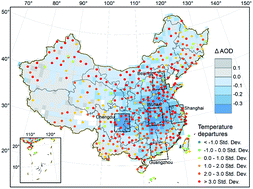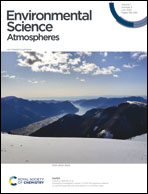Aerosol presence reduces the diurnal temperature range: an interval when the COVID-19 pandemic reduced aerosols revealing the effect on climate†
Abstract
The immense reduction in aerosol levels during the COVID-19 pandemic provides an opportunity to reveal how atmospheric chemistry is regulating our climate, among which the effect of aerosols on climate is a phenomenon of great interest but still in hot debate. The Intergovernmental Panel on Climate Change (IPCC) has continually identified the effect of aerosols on climate to have the largest uncertainty among the factors contributing to global climate change. Several studies indicate an inverse relationship between aerosol presence in the atmosphere and the diurnal surface air temperature range (DTR). Herein, we test this relationship by analyzing the DTR values from in situ weather station records for periods before and during the COVID-19 epidemic in China where aerosol levels have substantially reduced, compared with the climatological mean levels for a 19 year period. Our analyses find that DTRs from February to June during the COVID-19 pandemic are greater than 3 standard deviations above the climatological mean DTR. This anomaly has never occurred before in the 21st century and is at least in part associated with the observed reduction in aerosols.

- This article is part of the themed collections: Best Papers of 2021 from RSC’s Environmental Science journals, Urgent communications in RSC Environmental Science journals and Environmental Science – coronavirus research


 Please wait while we load your content...
Please wait while we load your content...